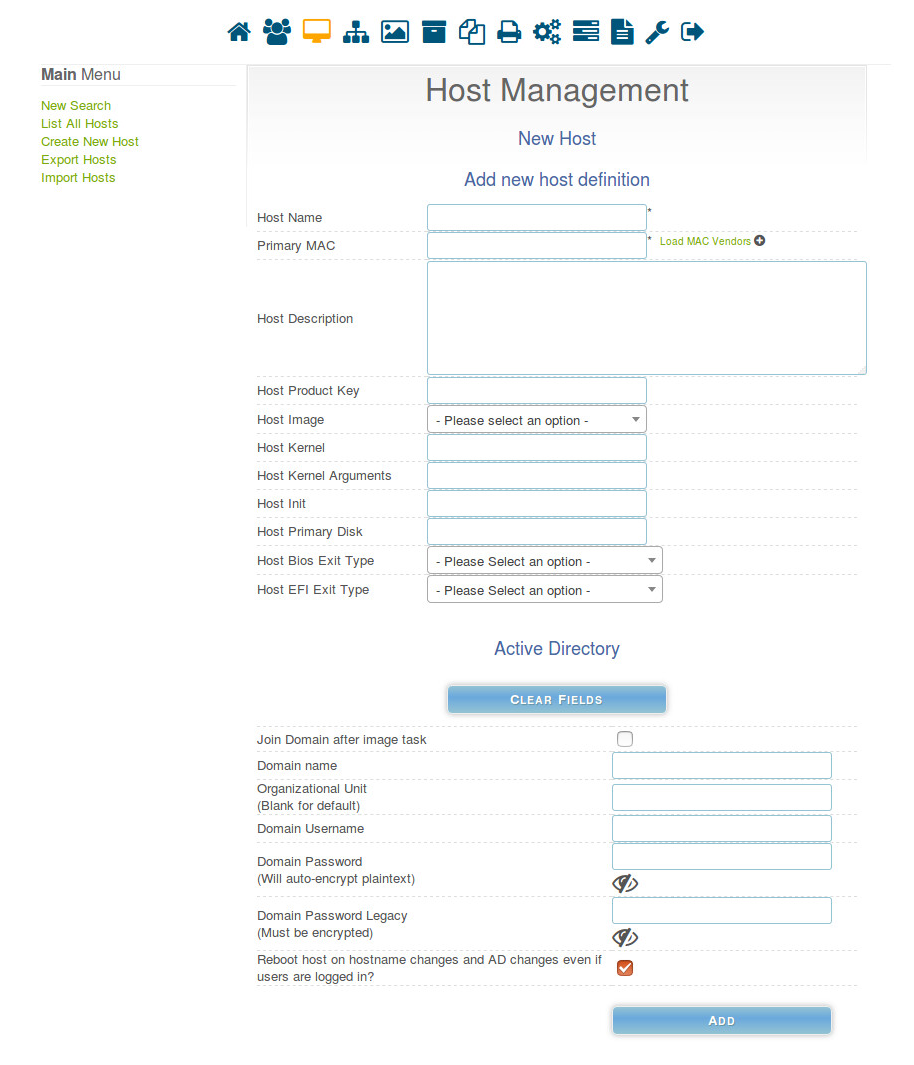Saving the Guest¶
Now you should be ready to save the physical machine to a clean state. In order for the physical machine manager to work, you must have a way for physical machines to be returned to a clean state.
Before doing this make sure you rebooted it softly and that it’s currently running, with Cuckoo’s agent running and with Windows fully booted.
Now you can proceed saving the machine. The way to do it obviously depends on the imaging software you decided to use.
In development/testing Fog (http://www.fogproject.org/) was used as a platform to handle re-imaging the physical machines. However, any re-imaging platform can be used (Clonezilla, Deepfreeze, etc.) to accomplish this.
If you follow all the below steps properly, your virtual machine should be ready to be used by Cuckoo.
Fog¶
After installing Fog, you will need to create an image and add an image and a host to the Fog server.
To add an image to the fog server, open the Image Management window (http://<your_fog_server>/fog/management/index.php?node=images) and click “Create New Image.” Provide the proper inputs for your OS configuration and click “Add”
Next you will need to add the host you plan to re-image to Fog. To add a host, open a web browser and navigate to the Host Management page of Fog (http://<your_fog_server>/fog/management/index.php?node=host). Click “Create New Host.” Provide the proper inputs for your host configuration. Be sure to select the image you created above from the “Host Image” option, when finished click the “Add” button.
At this point you should be ready to take an image from the guest machine. In order to take an image you will need to navigate to the Task Management page and list all hosts (http://<your_fog_server>/fog/management/index.php?node=tasks&sub=listhosts). From here you should be able to click the Capture icon, which should instantly add a task to the queue to take an image. Now you should reboot your Cuckoo guest image and it should PXE boot into Fog and capture the base image from the cuckoo guest.
Now that you have created and capture an image in FOG, Cuckoo will use this image to rebuild the guest machine after each analysis task. If you have provided Cuckoo with valid FOG credentials and enabled Remote RPC (as shown in the Network Configuration section), Cuckoo will automatically schedule the Deploy Task in FOG and will also reboot the guest machine for you.
Setup using VMWare (Bonus!)¶
Traditionally Cuckoo requires to be running some sort of virtualization software (e.g. VMware, Virtualbox, etc). The physical machine manager will also work with other virtual machines, so long as they are configured to revert to a snapshot on shutdown/reboot, and running the agent.py script. A use case for this functionality would be to run the cuckoo server and the guest sandboxes each in their own virtual machine on a single host, allowing for development/testing of Cuckoo without requiring a dedicated Linux host.

